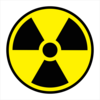The Vermont Department of Health Laboratory (VDHL) assists with responding to new and emerging public health threats such as an unknown infectious organism, an environmental contaminant that impacts human health, or a biological, chemical or radiologic terrorist threat. The VDHL responds to these events in collaboration with first responders, law enforcement and other state and federal public health entities.
When new health risks emerge, the VDHL analyzes the threats and provides that information to officials who can then respond effectively to protect citizens.
VDHL’s response may range from providing information on available tests, analyzing samples within the VDHL, or collecting samples and submitting them to an outside lab.

